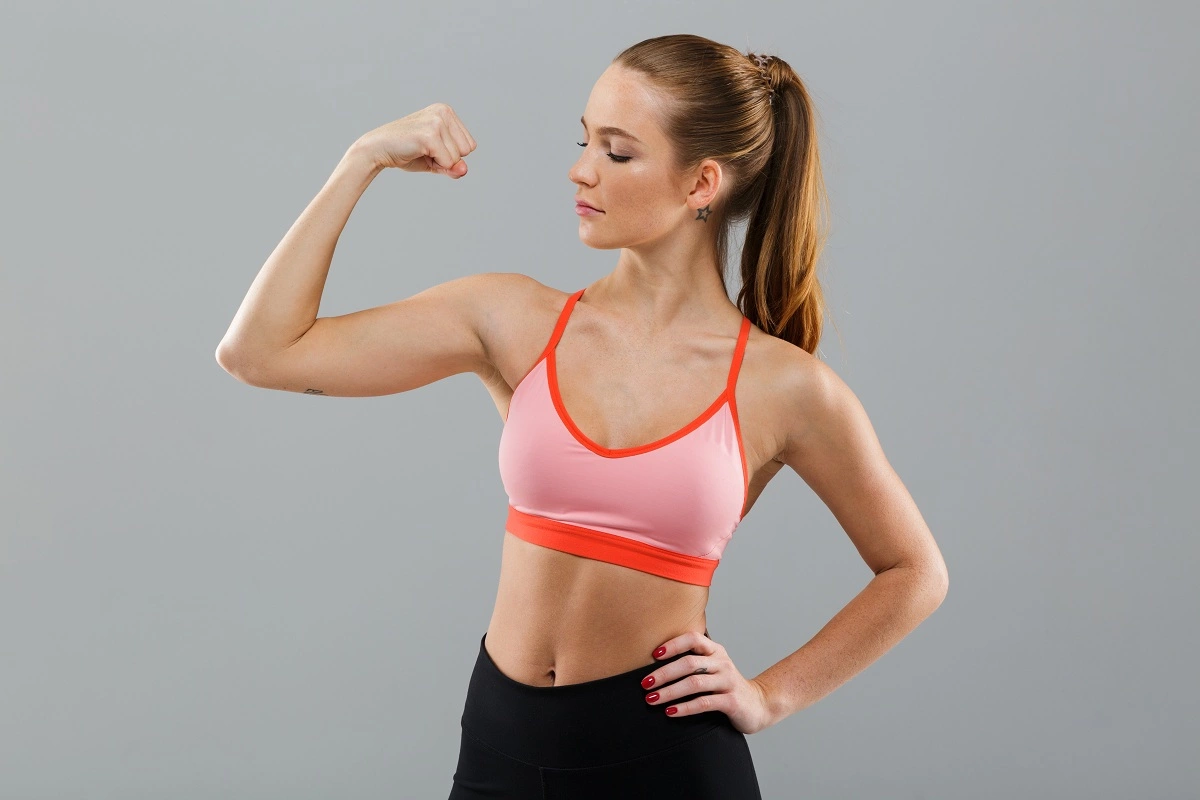Taking care of your physical fitness plays a great role in your overall well-being. The road to unlocking the benefits of boosted physical fitness starts with understanding what “fitness” is & what you can do to achieve it. Your physical fitness consists of five major components. Which is Cardiovascular endurance, Muscular endurance, Muscular Strength, Flexibility, and Body Composition. In this article, we will explain these components in detail and you can improve every aspect of them.
5 Components of Physical Fitness
1) Cardiovascular endurance
The term “Endurance” is widely used in different contexts. However, in sports, it is referred to as the athlete’s ability to sustain hand and prolonged workouts for several minutes and hours. Developing endurance in your body requires circulatory & respiratory systems for supplying energy to your working muscles for sustaining physical activity. Endurance is mostly referred to as aerobic endurance, which is equated to cardiovascular fitness.
During Aerobic Exercise, your body relies on oxygen for supplying the energy required for exercising. Cardiovascular endurance maintains an elevated heart & breathing rate for an extended period. The main objective of developing cardiovascular endurance training is boosting your energy production systems for meeting the requirements of intense activity that are required. It can be developed by consistent physical activities performed for extended periods.
How to improve your Cardiovascular Endurance?
Cardiovascular workouts improve the body’s ability in getting oxygen from your surrounding into your lungs, & diffusing into your bloodstream. With the boosted oxygen flow your body’s cells will work at their best capacity. Moreover, these workouts strengthen your heart muscles and pump more blood with each heartbeat.
Exercises for improving cardiovascular endurance are walking, running, jogging, cycling, swimming, rowing, stair climbing, aerobics, hiking & dancing. Sports like soccer, squash, basketball, & tennis also improve cardiovascular fitness.
2) Muscular Strength
The muscular is the amount of force your muscle can produce with the maximal effort. Your muscle fibers & your nerve’s ability to activate those muscle fibers play a great role in determining your muscular strength and physical fitness. It is mainly measured by muscular contractions. Developing muscular strength helps with body alignment, ease everyday activities & boost your metabolism. Most people think muscle strength is all about being stronger.
The amount of weight they can carry, how many push-ups they can perform in their workout clothes. But the definition is different. It is more about your ability to generate maximal muscle force during a particular exercise. Your muscular strength is dependent on several factors, such as the size of your muscles, ratio of fast-twitch & slow-twitch fibers.
How to improve your Muscular strength?
Resistance training is the best way of building muscular strength. You don’t necessarily have to lift heavyweights in the gym to improve your strength. Simple body weight exercise can be beneficial for improving it. The strength training performed in your workout clothes improves your muscular size & your nerve’s ability to communicate those muscles. So, the muscles not only get stronger but their coordination improves. With two-three of resistance training, you will start noticing your muscles getting stronger and better defined.
3) Muscular endurance
Muscular endurance is all about the period your muscles can sustain an exercise. Improved muscular endurance improves your overall well-being. The muscle can push against resistance like weights or body weight, for a certain period. Greater endurance enables a person to complete more reps of a workout. Before getting fatigued. It can be developed and improved by different fitness techniques.
Muscular endurance is different from muscular strength. But you have to improve your muscular strength, for complementing your endurance. Muscular endurance is more about the prolonged performance of your muscles; strength is about how hard it feels on your muscles. For stronger muscles, it is easier & less work to perform the exercise for long periods.
How to improve your Muscular Endurance?
- Cardio training: Cardio Training is one of the popular & effective exercises. Activities like running & cycling help in developing muscular endurance.
- Strength Training: Low-intensity strength training is also very beneficial in improving muscular endurance.
- Circuit training: Circuit training also boosts your muscular endurance.
Common exercises for improving endurance are planks, body-weight squats, push-ups, sit-ups, and walking lunges.
4) Flexibility
Flexibility is your joint or a series of joints’ ability to perform an unrestricted, pain-free range of motion. Many variables in the human body affect a person’s flexibility. It is mainly the range of motion your joints have. It plays a major role in hindering the movement while affecting your coordination, balance, and agility.
Maintaining a full range of motion through your major joints can reduce the likelihood of injury and enhance athletic performance. With age, flexibility becomes more critical to your body’s performance. It has a direct effect on your life quality and everyday activities. The range of motion is defined as how extended a moment your joint is capable of acting. Your joint’s range of motion is measured by devices like a goniometer and inclinometer. It is measured in degrees with functional tests.
How to improve your Flexibility:
By following simple ways your body’s flexibility can be improved:
- The most important action that improves your flexibility is stretching. Static stretching is when you hold a certain position for 10-30 seconds.
- Exercises that make you perform dynamic stretching like yoga, barre, Pilates, and Tai Chi.
- Active stretching, like lifting the leg-up high & holding it in exact position by using the contractions of your opposing muscles for relaxation improves lower-body flexibility.
- Passive stretching, which is known as relaxed stretching, in which you stretch a position & hold it with the assistance of some other part of your body is also helpful in improving your flexibility.
- By doing Isometric stretching.
5) Body composition
It is the method of dividing your body into the core components which are: fat, protein, mineral & body water. It accurately defines weight & provides an improved glimpse of your overall health. It precisely indicates the change of fat mass, your muscle mass, & body fat%. Most of the diet & fitness tends to focus on the overall weight you want to gain & lose.
This approach fails to consider is how two people of similar sex & body weight look different from one another as they have a different body composition. Your body composition defines the fat, bones, water, & muscles in your body. It tells about the unique makeup of your body. So, you can improve your overall well-being.
The Body composition analysis is an accurate way of describing what your body is composed of. While differentiating among essential components from which your body is made up of. It helps in having better physical fitness level i.e when most of the people tend to lose weight, they talk about losing unwanted fat. But in the quest, they lose muscle mass too. Which is what body composition helps with maintaining.











